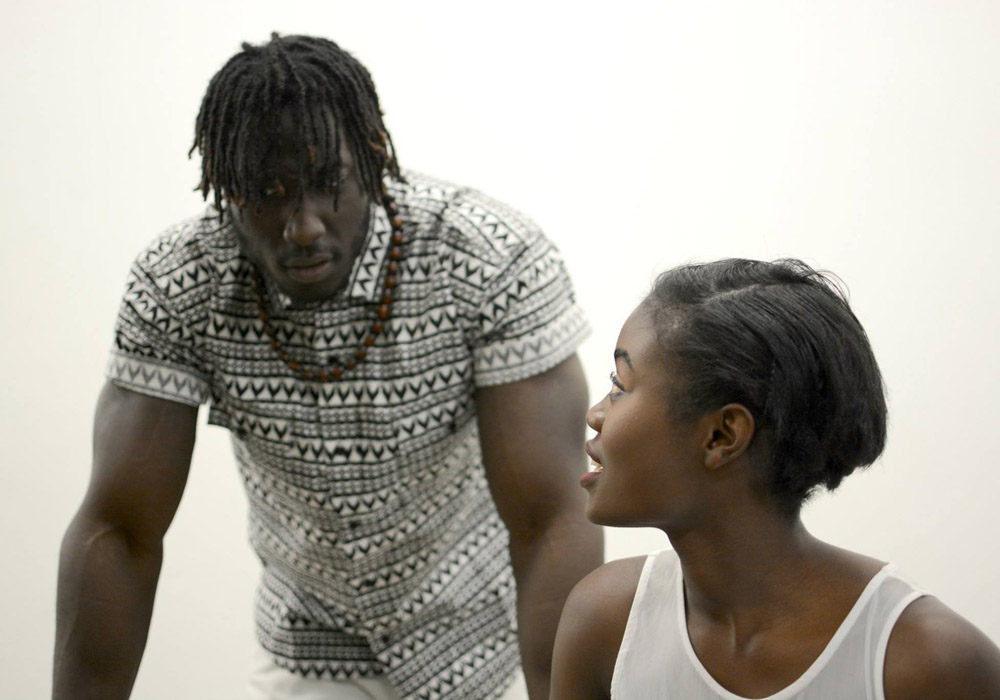Keshra Hines, Contributor
Featured image courtesy of University of Toronto’s African Studies Course Union
Funny, riveting, and relatable.
An Africanized retelling of a classic childhood fairytale, Cinderella was presented by the University of Toronto’s African Studies Course Union between March 16 to 18.
Written by Vanessa Jev, the play takes a revisionist stance on the retelling of the Cinderella story, placing a black woman in what is a traditionally the role of a white lead. Cinderella, played by Abigail Whitney, and Dami, Prince Charming, played by Hassan Di, are accompanied by friends who add a creative and humorous layer to the story.
Recently back from studying in the United States, Dami has the attention of all the girls, including his ex-girlfriend Lehana. Dami’s parents welcome him back home with a ball, where his mother, played by Sandy Madu, encourages him to find a wife. Assuredly, despite the attempts of her stepmother to hinder her, Cinderella makes it to the ball. With twists to the original plot, Cinderella still eventually loses her shoe and is later found by her Prince Charming after a trial and error of shoe fittings.
“I knew it was going to be a black or Africanized version of Cinderella, but I didn’t expect it to feel so familiar,” says one audience member.
The accented and oft colloquially way of speaking was no minor point to the play. African and Jamaican Patois accents were a personable feature of the show, resonating with many in the audience.
The actors were strong, lines delivered clearly, and the relationships, whether between Cinderella and her friends, her stepsisters, or with Dami, often felt all too familiar; both the actors and the story connected with audience. Jokes and comedic pauses were perfectly timed, and the emotions in the actors’ faces and voices were well communicated. For a production put together in just a few short months, this play is deserving of full stars.
In a promotional video for the play by the York University Black Students’ Alliance, a narrating voice asks, “Why can’t Cinderella be black?”
Be it the classic angry black woman, Jezebel, or the baby mama, black female archetypes are pervasive. On-screen representations of women of colour are rarely as positive and prominent as their white counterparts.
With the exception of the extremely progressive 1997 Cinderella telefilm musical starring Brandy Norwood as Cinderella, and an Asian prince (Paolo Montalban) who had a black mother (Whoopi Goldberg) and a white father (Victor Garber), as well as The Princess and the Frog, where the princess spends most of her time as a frog, black women and women of colour in general are rarely portrayed as the princesses, as the ones worthy of saving, or as the hero protagonist.
A seemingly unending discussion, the stereotypical portrayals of black women is reductive of their humanity. Black women today can be the Olivia Popes, the Mary Janes, the Cookie Lyons. But where are the black Amy Poehlers and Katniss Everdeens? Where are the black Cinderellas?
Young black girls should be able to look at the Disney princesses they admire and see representations of themselves. With hair, skin, noses, and other features that look more like theirs, reminding them that they too, are beautiful.
Black women, all women, deserve to see themselves in roles that reflect their experiences and respects their humanity. Not only in roles of the baby mama, but also the loving wife. Not only the angry black woman, but the caring friend.
Why can’t Cinderella be black? It is not just a matter of “can,” but a matter of should. Cinderella should be black. Because black women are beautiful and worthy of positive portrayals.
Black women are princesses too.
Tweet us, @excaliburYU


